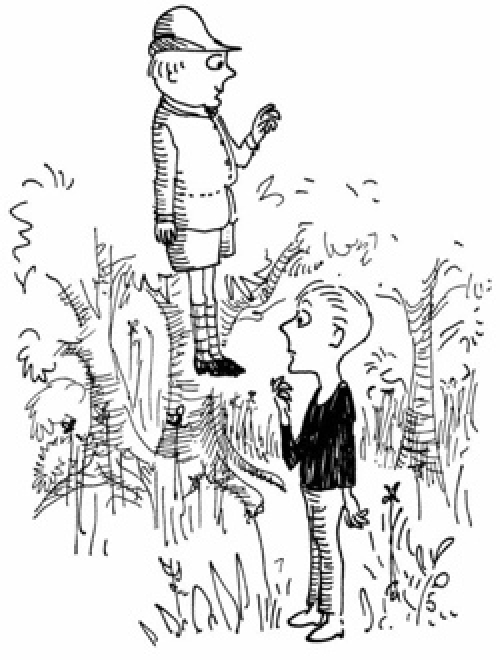When I was seven, I got Norton Juster's brainy adventure YA The Phantom Tollbooth as a present. I skipped past the maps to the first Jules Feiffer illustration of Milo. Then all of a sudden this unquestioning boy was piloting a toy car past a tollbooth and stopping in front of a Whether Man, debating whether there'll be weather.
I was hooked. I loved the idea of another world. I had dreams about watching Chroma's orchestra putting color into the world. And of course I'd be able to spell hard words like "vegetable" just as fast as the Spelling Bee.
I even liked the film version. (I know. I know.)
There's a really cool scene where Milo goes back and forth in the tollbooth, switching from human to cartoon to human. That was when I started seriously wondering what I would look like if I was cartoonified.
I told my dad about this idea while we were eating pie at Tippin's. And then my dad, the nuclear engineer, turned my world upside down: he told me to read Flatland. We went to the library, and my jaw dropped as I saw this picture of a sphere moving through a two-dimensional world:
Now over a century old, Flatland is the story of a Square living in a two-dimensional world: houses are their blueprints, and women, being lines, are required to hum as they move so that polygonal men aren't accidentally run through in their silence. The Square meets a Sphere one day, perceiving the three-dimensional being at first as a circle that expands and contracts at frightening speeds. Once the Square finally understands the third dimension, he tries in vain to convince the Sphere that there may be even higher ones.
It was a Copernican revolution of my mind. I imagined what an amoeba floating on the surface of a pool would see as an Olympic diver broke that surface: ten circles for fingers joining into two arms, a third circle for the head joining with the arms into an elongated torso...and then, my brain shifting in the opposite direction, I tried to imagine the fourth dimension.
Which I couldn't do. I saw drawings of hypercubes, and realized that they were exactly as useless as one-dimensional drawings of cubes. I couldn't get my head around the dimension extending outward from our world. My excitement faded. I didn't want to be cartoonified anymore.
I went back to The Phantom Tollbooth. In the end, Milo rescues the twin princesses Rhyme and Reason from the Castle in the Air. Then the entourage comes back and there's a great big festival before Milo heads back to his real world, no worse for the wear. It wasn't until much later that I laughed; I finally understood that even the three-dimensional world would make no sense without rhyme or reason.
Image: Alec Bings, the boy who sees through things, drawn by Jules Feiffer






 A Black Balloon Publication ©
A Black Balloon Publication ©